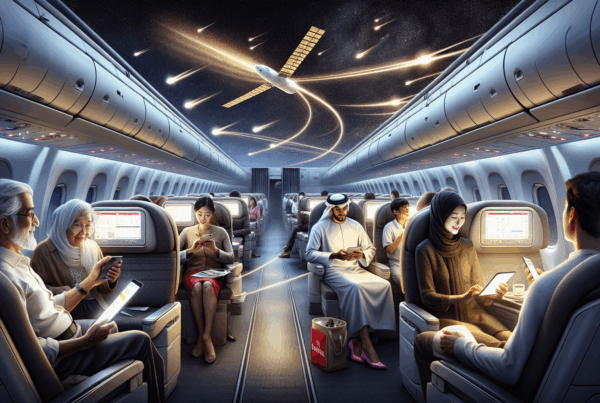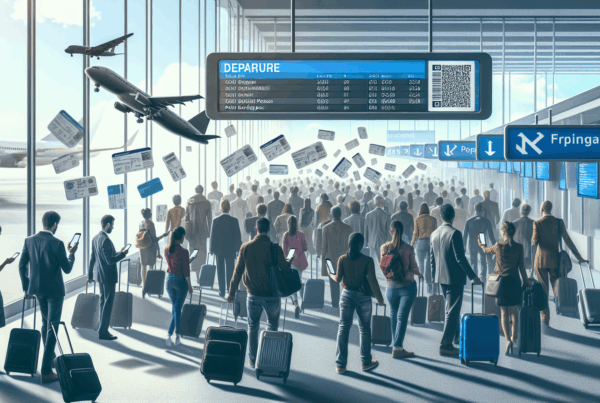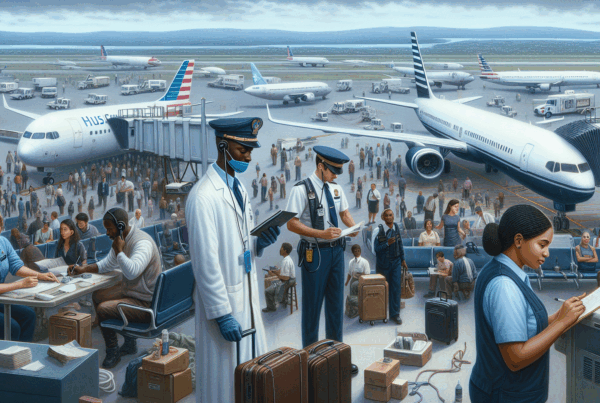Emirates has announced a major turning point for the passenger experience by choosing to equip its entire long-haul fleet with the service Starlink. More than just a marketing promise, this decision reflects a technical and commercial transformation that could reshape passenger expectations and accelerate the race to the top. high-speed connectivity in aviation.
A promise of connection: what does Starlink really bring on board?
The rise of Starlinkbased on a constellation of low-orbit satellitesThe satellite's high-speed, low-latency architecture enables it to offer significantly higher speeds and latencies than traditional geostationary solutions. For passengers onEmiratesthis means the possibility of streamer high-definition video, make video calls, work in real time on cloud services and access interactive content without notable constraints. The promise of "fast and instant" Wi-Fi is in line with increasingly demanding business and leisure uses.
What this means for the travel experience
The use of In-flight Wi-Fi ceases to be a simple additional service and becomes a central element of the commercial offer. Passengers in Economy, Business or First class now expect a stable connection comparable to that on the ground. Emirates will offer access free of charge for all travelers, according to the announcement, permanently altering the perception of added value on board. For business travelers, the ability to telework efficiently during long rotations is a strategic asset. For tourists, live broadcasts and instant experience sharing become a strong argument for choosing one airline over another.
Technology and integration: challenges and adaptations
The integration of Starlink on a fleet of Boeing 777s and Airbus A380s requires structural and electronic modifications. Each type of aircraft requires an adapted antenna and data routing architecture to ensure coverage, redundancy and compliance with aeronautical standards. Emirates is planning a phased deployment, with several antennas per aircraft to guarantee maximum capacity and resilience to on-board traffic peaks.
Antennas, certification and maintenance
Antenna installation requires rigorous certification work, involving in-flight tests, system validation and specific maintenance procedures. Bandwidth management between on-board systems and passenger services requires fine orchestration to avoid interference and guarantee the security of the aircraft's critical communications. The company's schedule calls for several aircraft to be equipped each month, until total coverage is achieved, with a gradual ramp-up in the services offered.
In-flight data governance and regulation
Intensive use of the Internet on board raises questions of sovereignty, data protection and compliance with international regulations. Service providers have to adapt to local rules on content and surveillance, particularly when crossing sensitive areas or landing in jurisdictions with strict requirements. Emirates will have to reconcile a global and homogeneous offer with local adaptations according to destination, while guaranteeing the confidentiality and security of passenger connections.
Impact on the air transport market: competition, business models and the future
Emirates' announcement will intensify competition between connectivity providers such as Starlink and incumbent operators. Companies that fail to invest quickly risk being perceived as out of step with a more connected customer base. The business model is also changing: offering free Wi-Fi is becoming a powerful commercial lever, likely to be integrated into fare offers, loyalty programs or content partnerships. In the medium term, broadband connectivity could redefine the monetization of in-flight services, from entertainment to duty-free sales and personalized experiences.
Consequences for aircraft and equipment manufacturers
The widespread adoption of LEO solutions is driving manufacturers and integrators to design cabins and electrical systems optimized for continuous connectivity. Equipment manufacturers need to offer antennas that are lighter, consume less power and can be easily certified. Airbus and Boeing, as well as cabin systems players, are observing these developments and adjusting their roadmaps to natively integrate connectivity as a standard component of new aircraft families.
This transformation does not just concern Emirates: it is having an impact on the entire air transport ecosystem, accelerating the adoption of in-flight Internet as a differentiating criterion. To keep pace with this dynamic, airlines, airports and service providers will have to work together to guarantee a seamless, secure experience that meets the expectations of an increasingly demanding global clientele.




